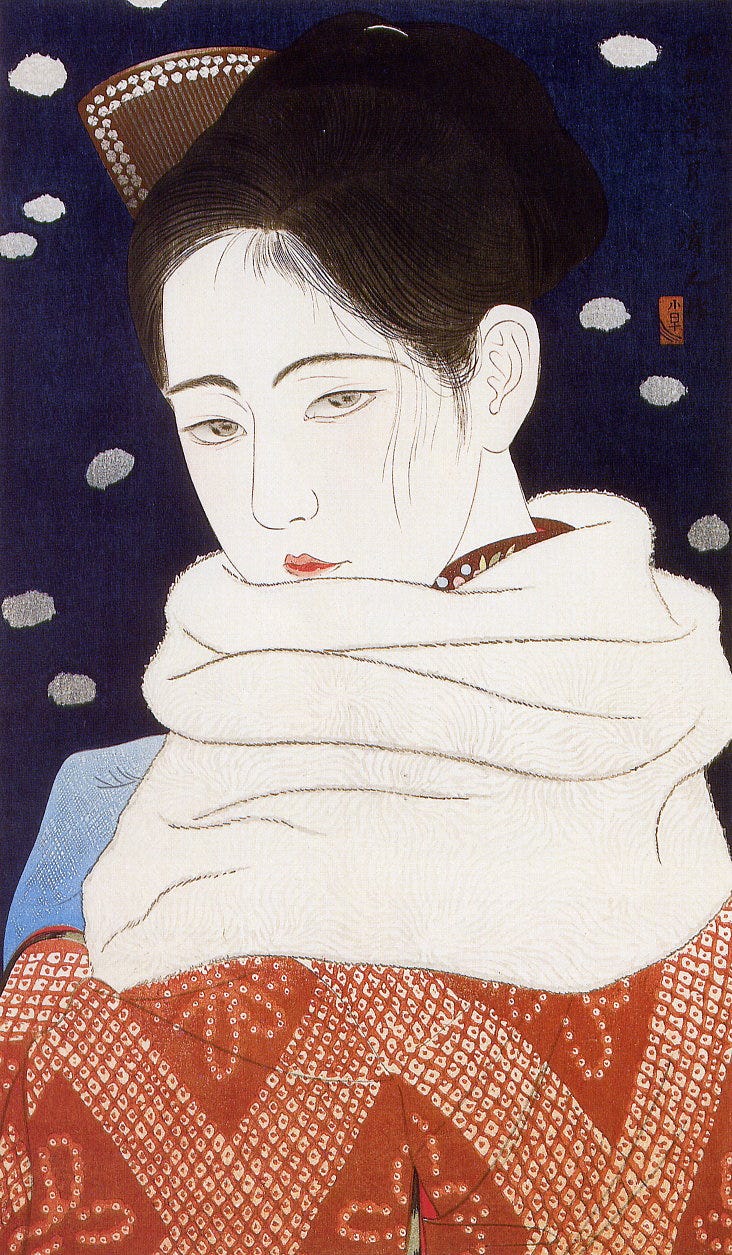
Historians are supposed to be objective. At least, that seems to be the social consensus. I’m not objective. In my particular case, I became a historian and chose to study Japan’s Taishō Period (1912-1926). The choice has nothing to do with objectivity and everything to do with fascination, passion, confusion, and yes, love. I love Taishō.
I first discovered Taishō in the mid-1990s while living in the Tokyo area. To improve my listening comprehension, I watched TV. By chance, I caught the 1995 broacast of NHK’s "Smile Through Your Tears: The Tale of Seijiro Shimada. The show, based on memories shared by Shimada’s wife, Kobayashi Toyoko, was a biographical sketch of Taishō era novelist and iconoclast Shimada Seijiro (1899-1930).
Shimada’s life was difficult and sad. He spent his youth living in his mother’s workplace: a Geisha house. As a kid, he lived a rough and tumble life. He published his first novel, Chijō (Ground/On The Ground), with Shinchōsha in 1920 at the age of 21. The novel rocketed him to literary stardom. It was a social novel that explored the realities of life in the Taishō Period. He was hailed as a genius.
According to Toyoko, this Icarus flew too close to the sun, the weight of his childhood perhaps too heavy to defy gravity as an adult. He was inexcusably abusive toward women. He dallied, in one case, with the daughter of a rear admiral. Thanks to the growing media reach of his time, as well as his outrageous behavior, he did not get away with this misconduct. He suffered for it publicly and castigated himself as well. It colored his relationship with his wife and the world. As is so often the case, he passed his own difficulties on to those around him through his behavior as well as his writing. He’s not my hero. However, he was human. This fact brought home to me that history is about real people. Rarely do we get to see so far into someone’s mind, though in Shimada’s case, too, the mysteries are many and unsolvable.
Shimada reminded me of Vaslav Nijinsky, a star of the ballet in Europe at the very same time, whose diary I had consumed only a few years before. They shared in common an early life of abuse, abandonment, and amoral adult examples, and both made themselves icons within their art as young adults. Both also endured mental health challenges, and both died young. I think the mental health challenges may have been what drew me to them as individuals. Shimada died in 1930 at 31 years old in a mental health institution. It is not clear that he should have been. The NHK documentary that I saw was about a Japanese literary scholar trying to prove that he was not, in fact, insane at the time of his death.
This is what brought me to Taishō. In Shimada Seijiro, I found a man whose life was so different from my own that I had to know more. I was fascinated. Horrified by his behavior, I found I could imagine, if not countenance, some of his motivations. I had to read his novel. He became human to me, rather than a figure from the past. He was deep, multi-dimensional, and real. I felt compassion for him. His humanity prompted me, already addicted to history, to look within the context of his time and place to try to understand.
By turning over that rock, I found Taishō. The colors. The art. Oh, the art. The novels. The philosophy. The politics. The complexity. My awakening compassion for Shimada Seijiro opened up a new world. It lit a fire that still burns 35 years later. I wanted to study Taishō. It was a fascinating time of social, cultural, and artistic change. I think the Taishō-era paintings of Kobayakawa Kiyoshi are some of the most beautiful ever made. Shimada’s novel Chijō is a work of genius. The colors in Taishō paintings lift my spirits and touch my soul. The ideas in Taishō novels and philosophy play endlessly in my mind. I imagine the excitement of Japan’s growing cities, its new and active middle class, the perfectionism and professionalism of Taishō craftspeople and the inventiveness of Taishō laborers and petit bourgeois, the heart-tugging and foot-stomping melodies of Taishō popular music, and the gorgeous Taishō fashion for men and women.
I study Taishō. I even wrote the first draft of this post with fountain pen ink given to me by a friend, that reproduces a well-known purple from Taishō Japan. I try to be objective when I write history. However, I have to confess: the history I write is of a time and a place that I love.




A great start. Looking forward to more!